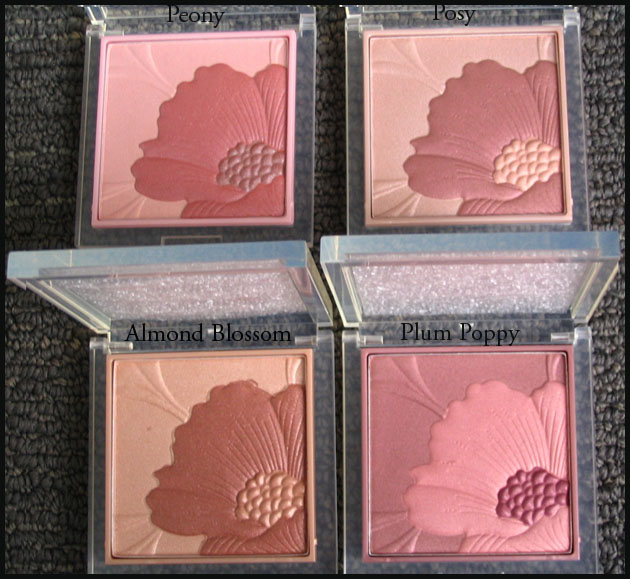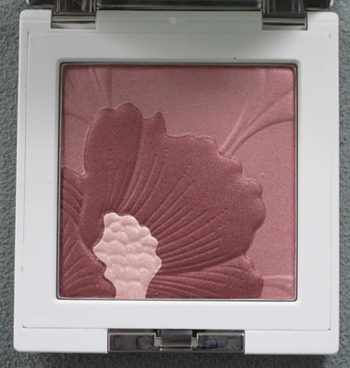The Curator is positively chomping at the bit for spring to start – oh, how I despise the winter – so I figured I'd share these Fresh Bloom palettes by Clinique. I loved the pretty floral design so much I got them all immediately when they were released in spring 2007. They were limited edition for a while, but the demand became so great Clinique made them part of their regular line.
Another got released in the fall of 2008, Blackberry Bloom (sorry it's a separate picture from the others – I was too lazy to retake them all together!):
And there is also a Bamboo Pink one released last summer, which sadly I am missing. I need to get my hands on it to complete the collection!
Hurry up spring!


